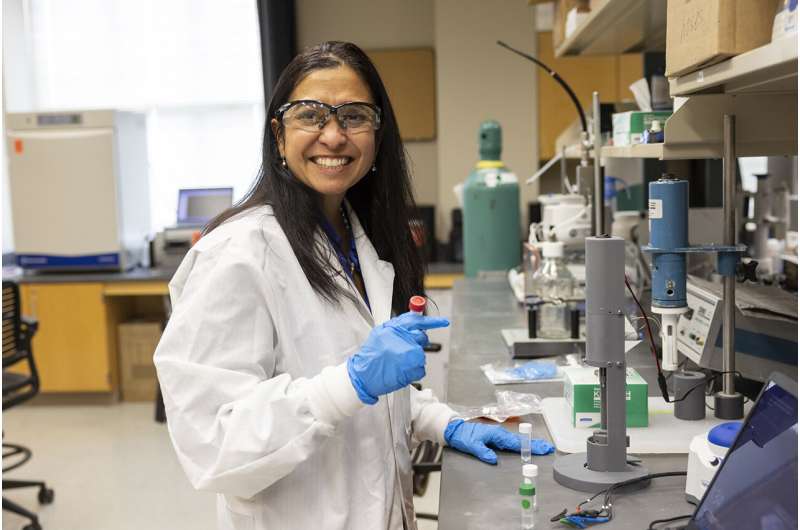Researcher in final stages of FDA approval for ultra-fast COVID-19 test

In the summer of 2020, Texas Tech University’s Office of Research Commercialization filed a patent application and applied for the COVID-19 Prioritized Examination Pilot Program with the U.S. Patent and Trade Office.
The patent application was for Gerardine “Gerri” Botte, a professor and Whitacre Department Chair of the Department of Chemical Engineering housed within the Edward E. Whitacre Jr. College of Engineering.
Botte led a team of researchers—including doctoral student Ashwin Ramanujam and Sharilyn Almodovar, an assistant professor in the School of Medicine at Texas Tech University Health Sciences Center (TTUHSC) – to create a COVID-19 test as accurate as the gold standard for current testing and faster than present rapid tests.
The Ultra-Fast COVID-19 detection sensor is now in the final stages of approval from the U.S. Food and Drug Administration (FDA.)
“In terms of having an emergency use authorization from the FDA, one of the requirements that we have right now is to have the final system ready for the manufacturer and having a manufacturing partner,” Botte said.
“We have the manufacturing partner engaged, the capacity to build, and we have our final device. We’re doing the final clinical trials to finalize the application. We had a pre-application submitted and we are in the stages of finalizing those two to get the OK.”
https://youtube.com/watch?v=hMWNjAPWNn4%3Fcolor%3Dwhite
When the pandemic began during the spring of 2020, Botte was working on different sensors, particularly in the area of water treatment, and saw the opportunity to use what she had already learned to help combat the pandemic.
“We were working in sensors, for instance, for E.coli detection, which you cannot have in water because it will make people extremely sick,” she said. “You don’t want that in food either. So, when the pandemic came all the labs got shut down. And then I told my doctoral student Ashwin Ramanujam, who was working on the E. coli sensor, “I think there is a potential here to take our findings from the E. coli sensor, which we already have a good baseline for, and see how we can use them for COVID-19.'”
The sensor Botte and her team created can detect the coronavirus in saliva within seconds, but she also received a grant from the U.S. Department of Defense’s Defense Advanced Research Projects Agency (DARPA) to develop an indoor detector, similar to a carbon monoxide detector, that could identify deadly pathogens, like COVID-19, in the air.
Botte’s method involves passing an electrical signal through a chemical solution. The SARS-COV-2 proteins that pass through this electrical field respond to the signal, allowing the tester to determine if the virus is present.
A more traditional way to test for a virus—the gold standard Botte was required to meet—is the Polymerase Chain Reaction (PCR) test. A PCR test is a three-step process that allows for the identification of pathogenic organisms that are difficult to culture by detecting their DNA or RNA.
“The other interesting thing about this is our detection limit is much lower than the PCR by orders of magnitude,” Botte said. “What’s happening is that we could detect it at a level the PCR has not done.
Source: Read Full Article
